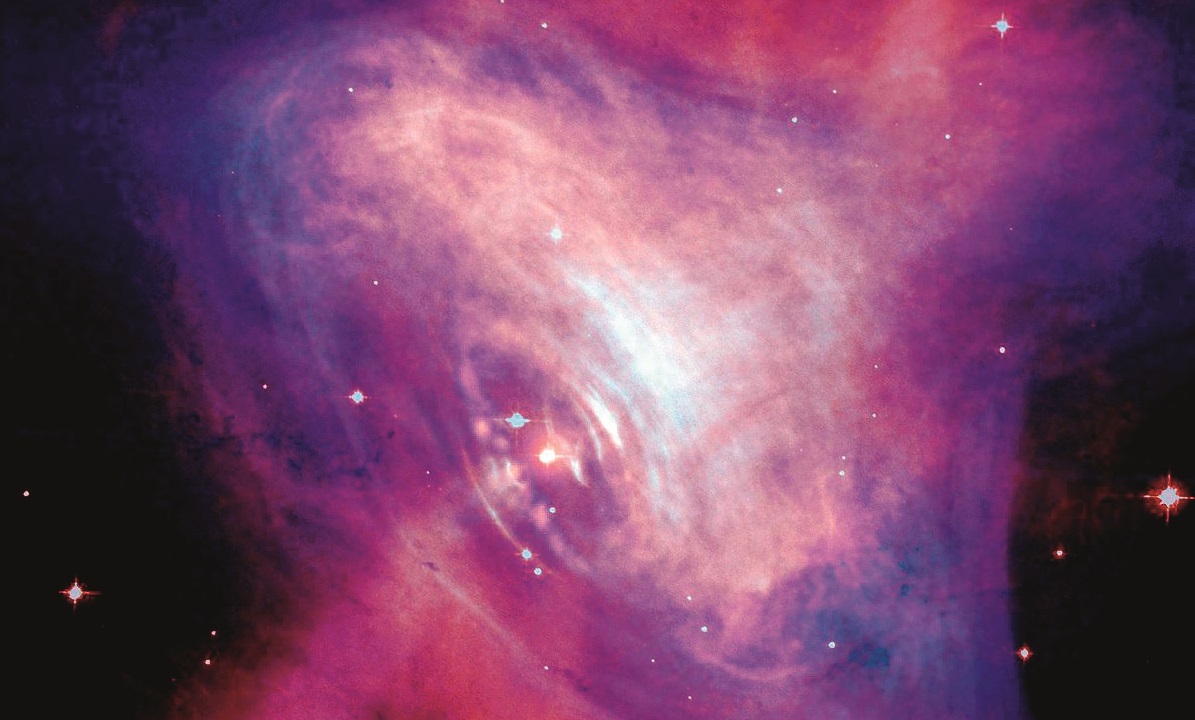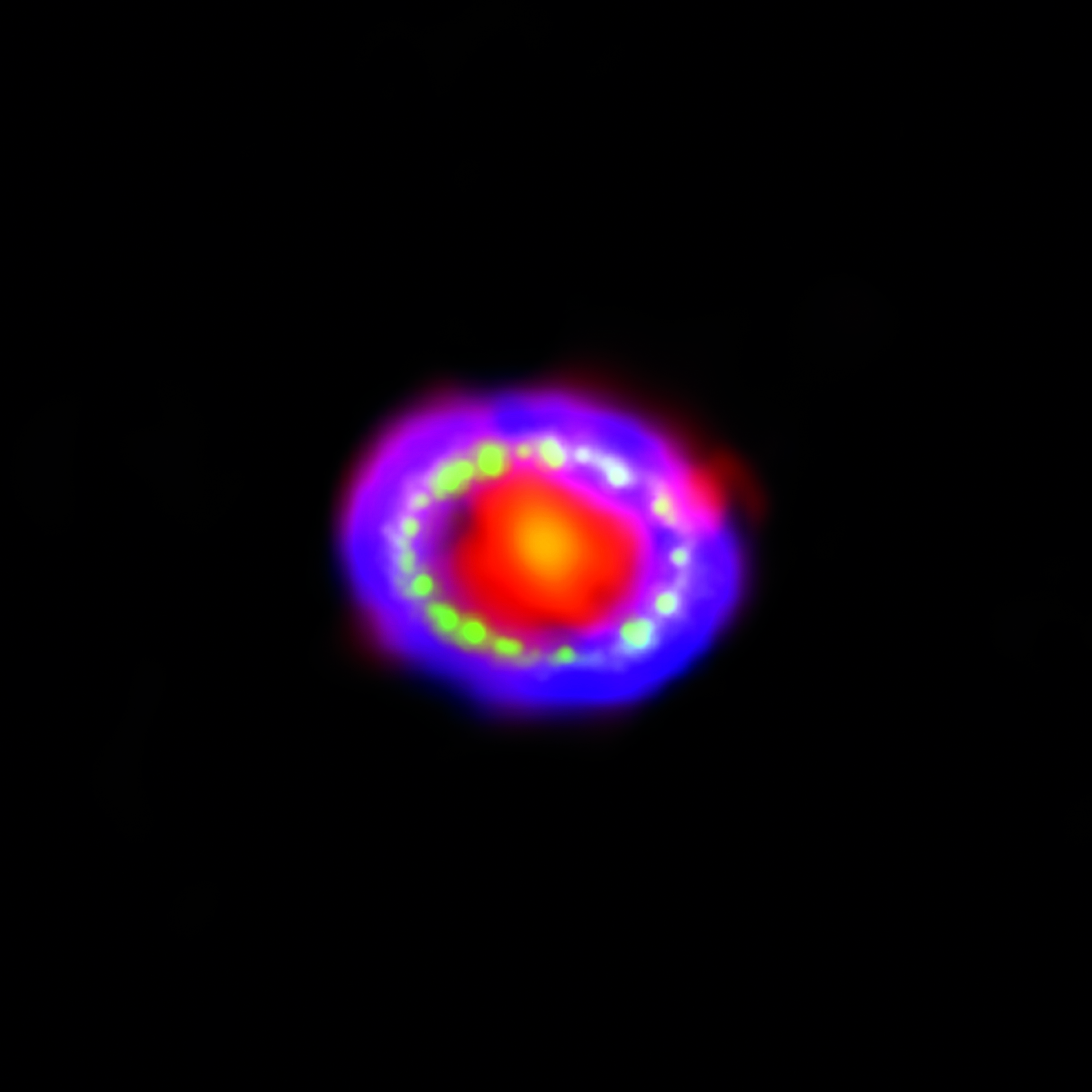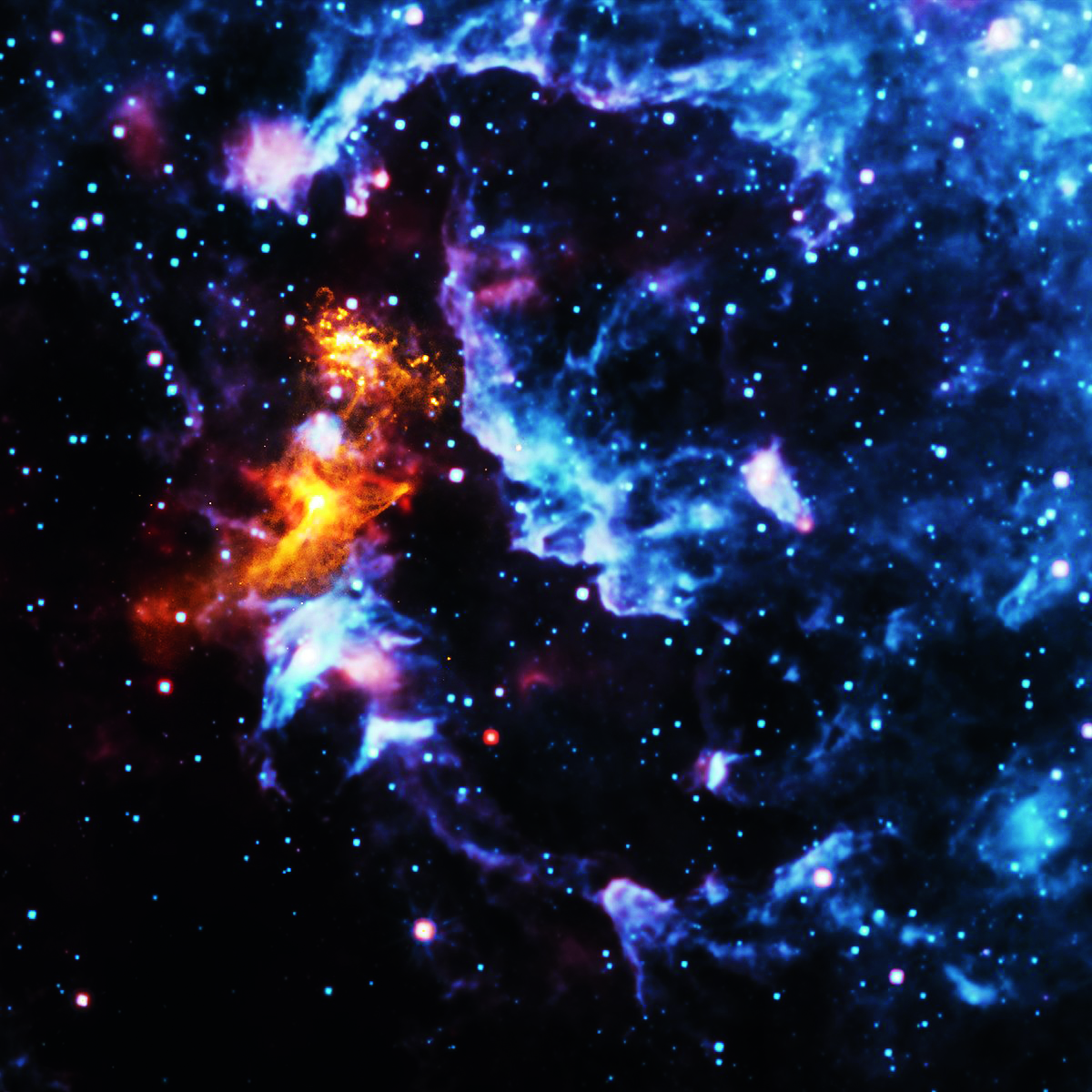Volunteer computing is narrowing down the search for neutron stars
Einstein@Home uses your computer's idle time to search for weak astrophysical signals from spinning neutron stars.


This article first appeared in PC Gamer magazine issue 360 in August 2021, as part of our 'Tech Report' series. Every month we explore and explain the latest technological advances in computing—from the wonderful to the truly weird—with help from the scientists, researchers, and engineers making it all happen.
Folding@Home, the distributed computing project that’s taking on COVID, cancer, and all kinds of other diseases through the power of unused graphic cards and idle CPU cores, has been in the headlines a lot recently, not only for creating the world’s first exascale supercomputer, but for its recent paper in Nature in which it set out potential targets for new drugs within the spike protein of SARS-Cov-2, which the virus uses to burrow into our cells and cause COVID-19.
But what if your thinking transcends Earthly disease and wants to roam wider? What if you want to join Tim Curry’s Anatoly Cherdenko in spaaaace? Well, with the demise of SETI@Home, you’re no longer able to hunt for signals from alien civilisations, but you can probe the mysteries of gravitational waves and neutron stars with Einstein@Home. (There are many other projects, including a neat one, Leela Chess Zero, that’s teaching computers to play chess.)
Einstein@Home takes data from various sources, including the Arecibo radio telescope we’ve covered in these pages before its untimely collapse. It then processes this data looking for pulsars, the rapidly spinning neutron stars discovered in 1967 by Jocelyn Bell (her male PhD supervisor was awarded the Nobel prize for her work in 1974, because cough, cough, cough) using the Arecibo telescope.
The idea for Einstein@Home came from a conversation in 1999 between physicist Bruce Allen, currently director of the Max Planck Institute for Gravitational Physics in Hannover Germany (while we’re talking about PhD supervisors, Allen’s was Stephen Hawking), and a friend. SETI@Home had been mentioned in the LA Times, but because studying gravity wasn’t considered as ‘cool’ as searching for aliens, the idea was dropped. The idea resurfaced in 2004, when Allen was put in touch with David Anderson from UC Berkeley, the man behind the BOINC software used by many distributed computing efforts. Einstein launched in 2005, and the rest is history. Or, given the wibbly-wobbly nature of time at the quantum level, possibly not.
Neutron stars are stars that have undergone gravitational collapse to the extent that the electrons, which usually orbit at a small distance from the protons and neutrons in the atomic nucleus, are forced to merge with the protons, creating nothing but neutrons. A neutron star 20km in diameter could weigh as much as one and a half times the mass of our Sun (diameter: 1.4 million km).
Studying pulsars and gravitational waves in this way requires plenty of computation time, however, and running the racks of equipment needed to create a modern supercomputer takes, according to Allen’s estimate, over 2.6 million euros a year just in electricity costs. Far better, then, to farm the work out to volunteers, using the spare capacity of computers that were running anyway.
A pulsar is a spinning neutron star. It acts something like a lighthouse, producing a beam of radiation from its magnetic poles (some emit visible light, others radio waves, X-rays, gamma rays...) that washes across the Earth. This looks to us like a light flashing on and off quickly and regularly (the Crab Pulsar spins once every 33ms). This speed and regularity offers a way to study gravitational waves, the new hotness in physics that act like ripples in spacetime, expanding and contracting the distance between objects as they pass by and therefore interfering with the regularity of the pulses.
Pulsars don’t actually generate gravitational waves themselves though, at least not that we can yet detect. Previous gravitational wave discoveries have come from one-off events, such as the merger of two enormous black holes that caused spacetime itself to ring like a bell. The discovery of continuous gravitational waves from a spinning object would be big news, as Allen explains, “The first detection was announced in February 2016, and since that time about 100 other signals have been detected. And they’re similar in nature, they’re either two black holes merging together, or two neutron stars merging together, they last a very short time and then they’re gone.
Keep up to date with the most important stories and the best deals, as picked by the PC Gamer team.
“What we’re looking for now, is what would happen if you had a spinning neutron star with a little mountain on it, a little bump. As that rotates, that little bump makes it wobble a little bit. And that wobbling radiates gravitational waves. And that would give us a picture of what’s going on inside the star, so this would be a way of studying the properties of a star that we can’t see otherwise.”
And when Allen says a ‘little bump’, he’s not kidding. “A neutron star is about ten kilometres in radius. We know, based on the searches that we’ve done, that they are round to about one part in ten to the eighth power, which means the mountains aren’t bigger than a tenth of a millimetre.” That’s an interesting definition of a mountain, but the data to support it comes from Einstein@Home—from the PCs of people like those who read this mag. If the bumps on a neutron star were any bigger, the thinking goes, they’d have been detected by now.
Star Turn
That kind of mind-blowing fact is part of the reason it’s important to study gravitational waves. Folding@Home has the USP of helping cure disease. SETI@Home was about finding aliens, who wasn’t going to sign up to that? Einstein@ Home is a trickier sell. “We all walk around with a picture of the world around us,” says Allen. “The Earth isn’t flat, the Moon isn’t made of green cheese, things like that. Your notion of what the universe is is part of how you understand the world, and what we’re doing here is a very small step towards understanding the world a little bit better. It doesn’t improve our lives from day to day, but I do think it’s actually an important part of human culture. When we discover, hopefully, continuous gravitational waves one day, it’s gonna be a footnote in history, but people will go on to use those to study and learn more about neutron stars, and from there learn about other very dense matter. It’s little steps. We think in our galaxy there are about 100 million pulsars, of which we’ve detected around 3,000 because they happened to be spinning at the right rate.”
Einstein@Home has been publishing several papers a year (four in 2020) detailing its discoveries and there is so much more to be discovered. While Folding@Home is tackling an acute crisis down on Earth, it’s good to know that others have their heads in the sky, making discoveries for no other reason than to expand the sphere of human knowledge.

Ian Evenden has been doing this for far too long and should know better. The first issue of PC Gamer he read was probably issue 15, though it's a bit hazy, and there's nothing he doesn't know about tweaking interrupt requests for running Syndicate. He's worked for PC Format, Maximum PC, Edge, Creative Bloq, Gamesmaster, and anyone who'll have him. In his spare time he grows vegetables of prodigious size.




